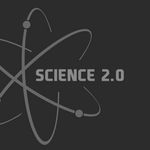Optics

Ultrafast, light-sensitive video cameras are needed for observing high-speed events such as shockwaves, communication between living cells and a Usain Bolt sprint. To catch such elusive moments, a camera must be able to capture millions or billions of images continuously with a very high frame rate. Conventional cameras have not been up to the task but researchers at the UCLA Henry Samueli School of Engineering and Applied Science say they have developed a novel, continuously running camera that captures images roughly a thousand times faster than any existing conventional camera. In a…

People are always going on about the life expectancy of babies and people in general. Now quantum states are getting their due.
For the first time, scientists have succeeded in measuring and controlling the lifetime of quantum states with potential use in optoelectronic chips. This achievement is highly significant for the ongoing development of this cutting-edge technology. The breakthrough involved measuring the intersubband relaxation time of charge states in silicon-germanium SiGe structures on a picosecond scale. Experiments have also shown that it is possible to control and…

The Institute of Quantum Electronics, School of Electronics Engineering and Computer Science at Peking University has proposed the concept, principles and techniques of an active optical clock.
Currently, optical clocks are based on laser absorption spectroscopy. Thus the available laser with narrowest linewidth limits the linewidth of optical clocks. However, experimental and theoretical results show that the thermal Johnson noise of cavity mirrors degrades the quantum limitation of Schawlow-Townes linewidth formula of a good-cavity laser.
In this work, Chen and colleagues proposed…

Researchers from the University of Melbourne and Princeton University have shown for the first time that the difference in reflection of light from the Earth's land masses and oceans can be seen on the dark side of the moon, a phenomenon known as earthshine.
Sally Langford from the University of Melbourne's School of Physics who conducted the study as part of her PhD, says that the brightness of the reflected earthshine varied as the Earth rotated, revealing the difference between the intense mirror-like reflections of the ocean compared to the dimmer land.
"In the future, astronomers hope…

If you haven’t the infinite ammo of the late Hunter S. Thompson or the lightning-fast trigger finger (and impressive spray radius) of a recent Vice President, it actually takes considerable skill to shoot a fish in a barrel (exact difficulty proportional to size of barrel and fish depth and inversely proportional to size of fish). Some of this trickiness is due to refraction, or the change in speed and thus direction of light waves as they move from air to water.
Wait a minute!? Isn’t the speed of light constant?
Yes. But only in a vacuum.
If you shoot light through glass, it travels only 0.…

The next time an overnight snow begins to fall, take two bricks and place them side by side a few inches apart in your yard. In the morning, the bricks will be covered with snow and barely discernible. The snowflakes will have filled every vacant space between and around the bricks.
What you will see, says Ivan Biaggio, an associate professor of physics at Lehigh University, resembles a phenomenon that, when it occurs at the smallest of scales on an integrated optical circuit, could hasten the day when the Internet works at superfast speeds.
Biaggio is part of an international team of…

Scientists are harnessing the cosmos as a scientific “instrument” in their quest to determine the makeup of the universe. Evalyn Gates calls from the University of Chicago calls it “Einstein’s telescope” but she actually means the phenomenon of gravitational lensing, which acts as a sort of natural telescope.
In general relativity, mass can warp space and create gravitational fields that bend light - confirmed in by Arthur Eddington during a solar eclipse, when he saw that the light from stars that passed close to the sun was slightly bent, making them appear out of position.…

Demands on telescope technology are rapidly increasing as astronomers look at fainter and fainter objects in the night sky. The large amount of light collection area required to view very dim objects poses a number of significant engineering problems to future telescope designers. To collect short-wavelength radio waves, for instance, an antenna miles across would be required. This has led engineers to construct multiple small telescopes whose signals can be integrated, providing the necessary level of detail.
Although they are putting this idea into practice at the Atacama Large Millimeter/…

Sliced light is how we communicate now. Millions of phone calls and cable television shows per second are dispatched through fibers in the form of digital zeros and ones formed by chopping laser pulses into bits. This slicing and dicing is generally done with an electro-optic modulator, a device for allowing an electric signal to switch a laser beam on and off at high speeds (the equivalent of putting your hand in front of a flashlight). Reading that fast data stream with a compact and reliable receiver is another matter. A new error-free speed-reading record using a compact ultra-fast…

'Cloaking' devices bend electromagnetic waves, such as light, in such a way that it appears as if the cloaked object is not there. In the latest laboratory experiments by Duke researchers, a beam of microwaves aimed through the cloaking device at a "bump" on a flat mirror surface bounced off the surface at the same angle as if the bump were not present. Additionally, the device prevented the formation of scattered beams that would normally be expected from such a perturbation.
The underlying cloaking phenomenon is similar to the mirages seen ahead at a distance on a road on a hot day.
How did…